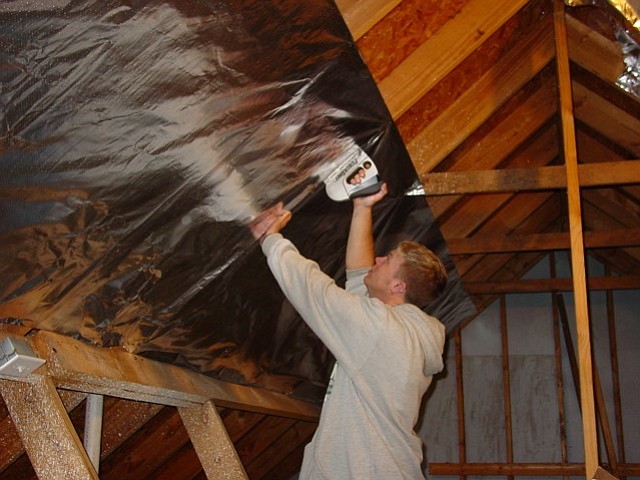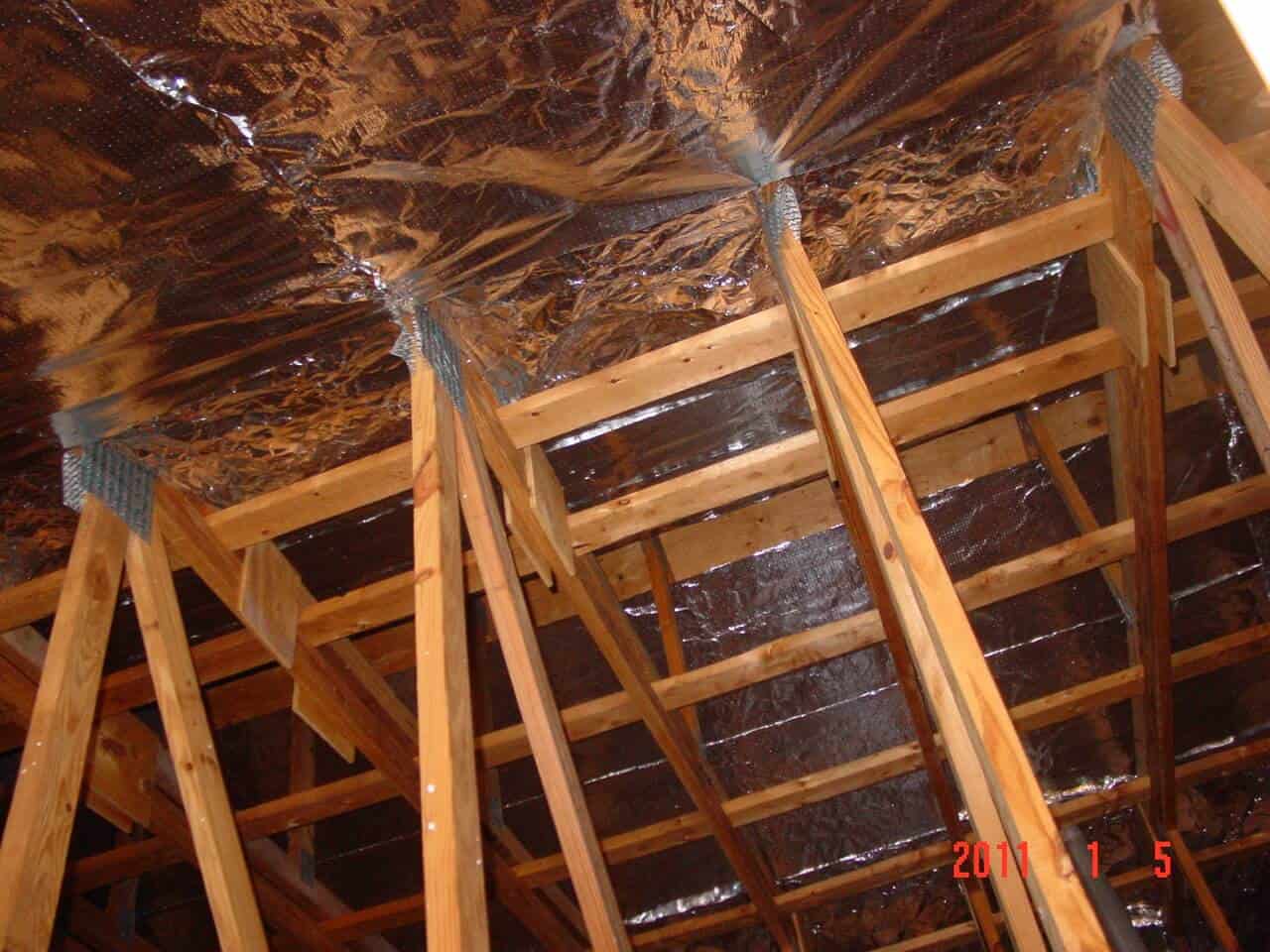


A heavy duty radiant barrier should be used for this application, so that it can hold staples and not come down over time. In an existing home, especially in warm climates, the preferred method for installing a radiant barrier is stapled to under the roof rafters. Misconceptions about radiant barrier damaging shingles.It is only viable if the roof is being replaced, and is not feasible in existing homes.Slightly less efficient by allowing heat to emit through the uncovered rafters.The reflective side is facing down, where dust, dirt and debris cannot settle.It decreases the temperature of the A/C equipment and ductwork in the attic.
RADIANT BARRIER INSTALL

Many builders have radiant barrier applied to the roof sheathing directly to cut back on time spent up on the rafters. This is makes it easy for the roofers to install in a short period of time, assuming the weather is accommodating. In new construction, the most popular application for radiant barrier in warm climates is to have it draped across the roof rafters, under the decking. There are certain pros and cons for radiant barrier applied in each of these methods, which we have addressed below. The installation method that is right for you may depend on many factors like climate, roof pitch, attic height, construction stage, and even the location of your ducts and HVAC equipment. Some of these installation methods are preferred over others, but all have sufficient research and testing to demonstrate their performance. Installation methods include radiant barrier draped over the rafters, applied directly to the roof sheathing, stapling to the bottom of the rafters, and even laying radiant barrier on top of the attic floor insulation.
RADIANT BARRIER PROFESSIONAL
One of the reasons our radiant barrier products are so popular with DIY homeowners and professional radiant barrier installers is that they are inexpensive and easy to install.


 0 kommentar(er)
0 kommentar(er)
